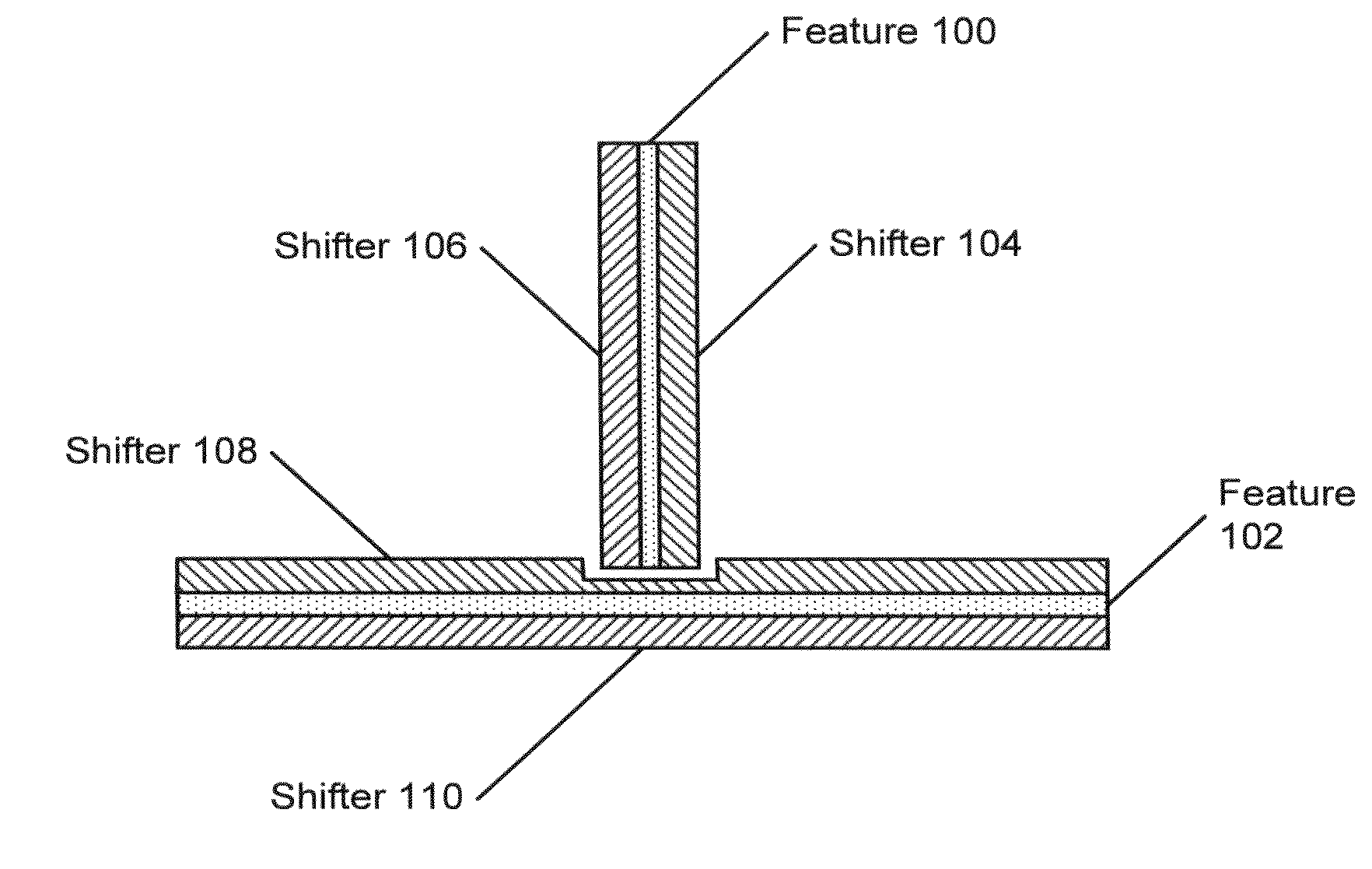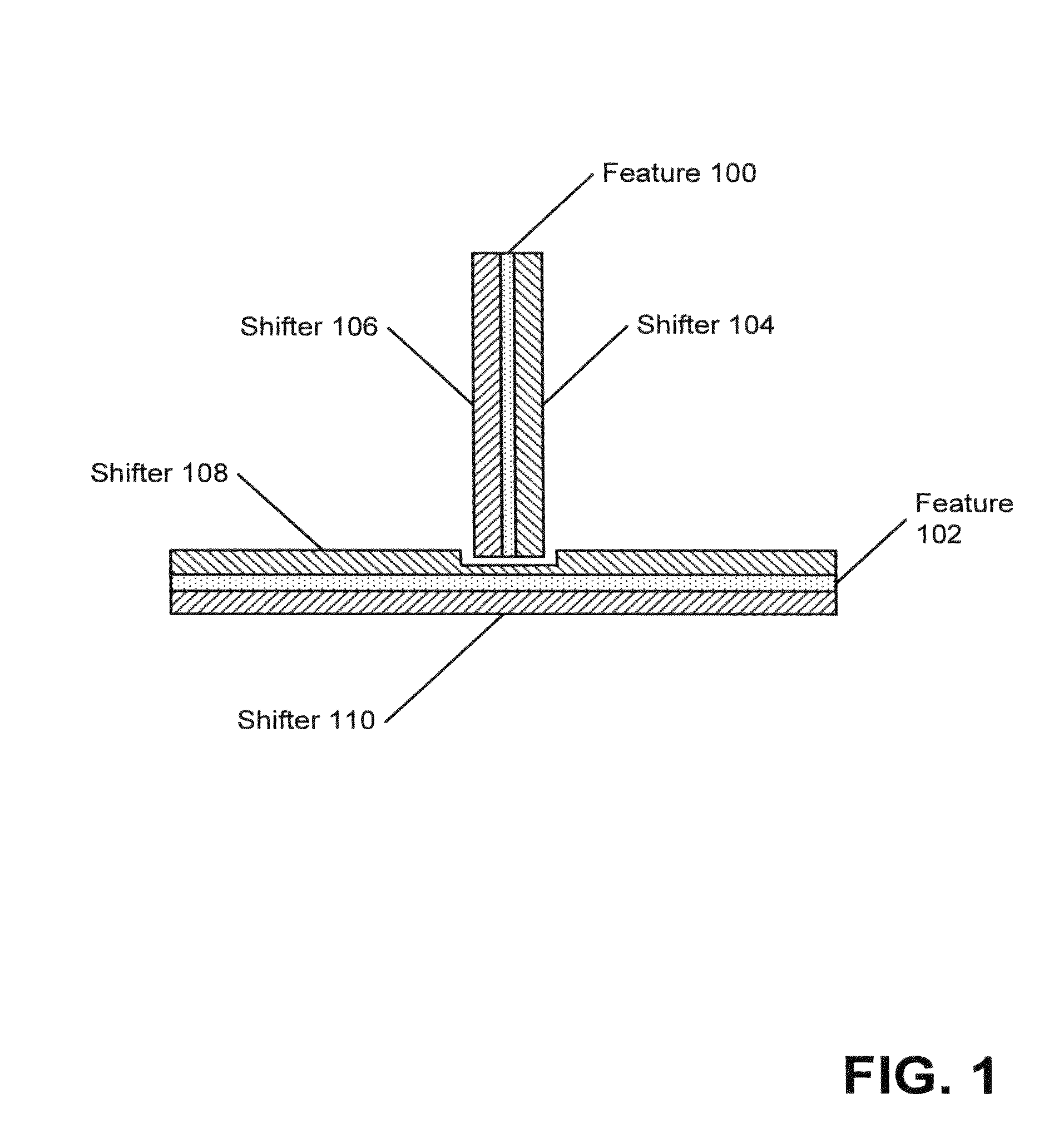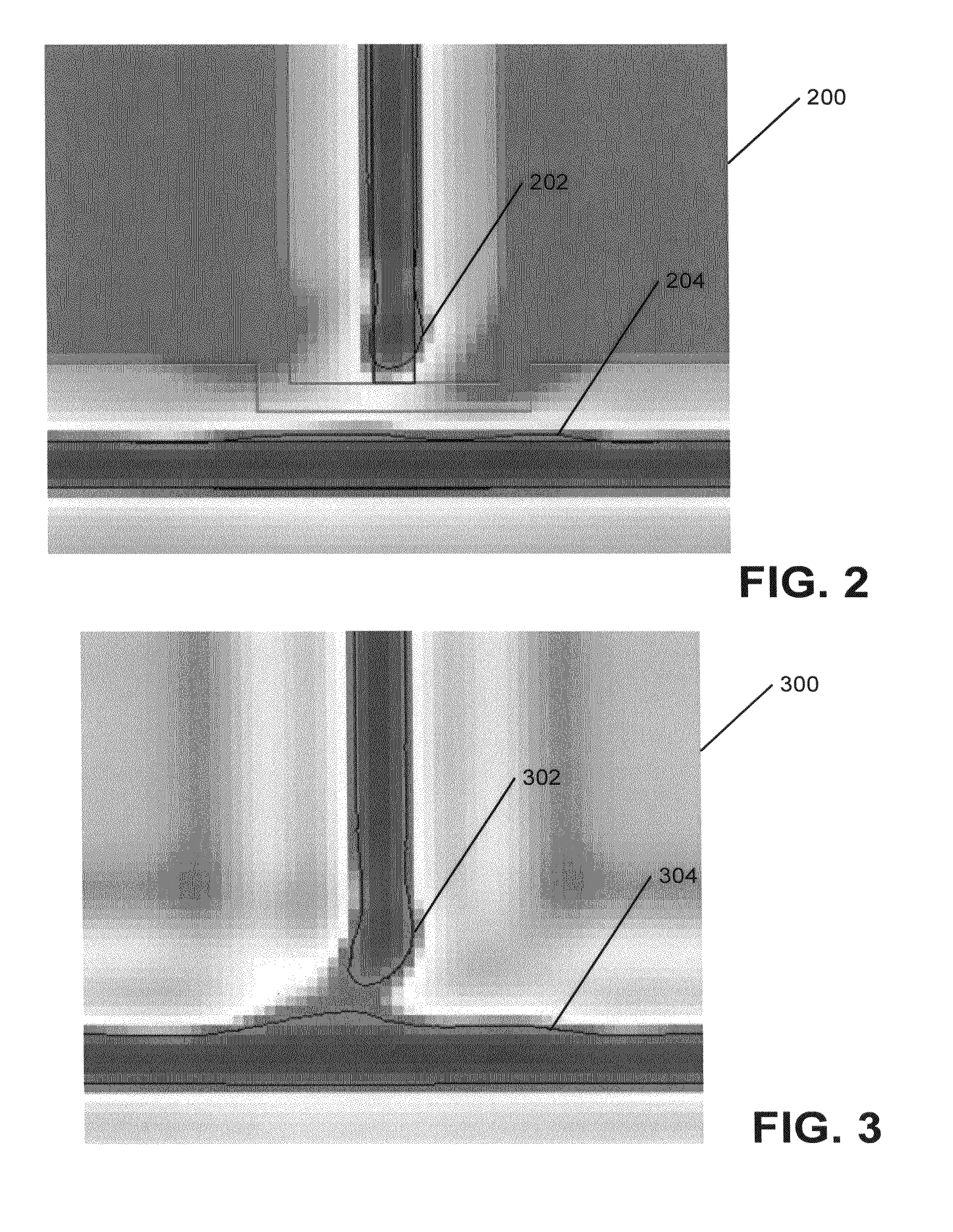Exposure control for phase shifting photolithographic masks
a photolithographic mask and phase shifting technology, applied in the field of phase shifting photolithographic masks, can solve the problems of mask manufacturing cost increase and mask cost increase, and achieve the effects of improving throughput, improving critical dimension uniformity, and improving the effect of quality
- Summary
- Abstract
- Description
- Claims
- Application Information
AI Technical Summary
Benefits of technology
Problems solved by technology
Method used
Image
Examples
Embodiment Construction
Overview
[0035]First, exposure settings for use in conjunction with phase shifting masks that produce substantial portions of a pattern of a layer on an integrated circuit (IC) using phase shifting will be considered. Next, relative dosing considerations between the phase shifting pattern exposure and the binary, trim pattern exposure will be considered. Finally, approaches for using a single reticle in the production of ICs using phase shifting will be considered. (As used herein, the terms “mask” and “reticle” are synonyms, generally referring to a device carrying patterns, also called layouts, for photolithographic exposure used in manufacture of semiconductor wafers or other workpieces.)
Exposure Settings
[0036]In one embodiment of the invention, an optical lithography exposure system, generally referred to as a stepper, has a setting of members of a set of one or more optical parameters that control characteristics of exposures, the settings used to expose the phase shifting patte...
PUM
| Property | Measurement | Unit |
|---|---|---|
| wavelength | aaaaa | aaaaa |
| phase | aaaaa | aaaaa |
| phase shifting | aaaaa | aaaaa |
Abstract
Description
Claims
Application Information
 Login to View More
Login to View More - R&D
- Intellectual Property
- Life Sciences
- Materials
- Tech Scout
- Unparalleled Data Quality
- Higher Quality Content
- 60% Fewer Hallucinations
Browse by: Latest US Patents, China's latest patents, Technical Efficacy Thesaurus, Application Domain, Technology Topic, Popular Technical Reports.
© 2025 PatSnap. All rights reserved.Legal|Privacy policy|Modern Slavery Act Transparency Statement|Sitemap|About US| Contact US: help@patsnap.com



